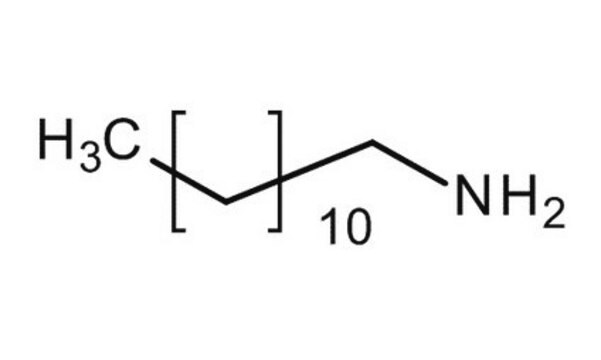H7408
Hexadecylamine
technical grade, 90%
Synonym(s):
1-Aminohexadecane, Cetylamine, HAD
About This Item
Recommended Products
grade
technical grade
Quality Level
vapor pressure
<1 mmHg ( 20 °C)
assay
90%
bp
330 °C (lit.)
mp
43-45 °C (lit.)
SMILES string
CCCCCCCCCCCCCCCCN
InChI
1S/C16H35N/c1-2-3-4-5-6-7-8-9-10-11-12-13-14-15-16-17/h2-17H2,1H3
InChI key
FJLUATLTXUNBOT-UHFFFAOYSA-N
Looking for similar products? Visit Product Comparison Guide
Related Categories
General description
Application
- Interfacial structuring of liquids: Hexadecylamine is explored for its role in the solvent-assisted interfacial association of oppositely charged polyelectrolytes and amphiphiles, offering potential advancements in the structuring of liquids for various industrial and scientific applications (Bak et al., 2023).
- Efficient light-to-thermal conversion: Additionally, hexadecylamine is used in ZnO nanorods loading with fatty amine as composite phase change materials (PCMs) device, enhancing light-to-thermal and electro-to-thermal energy conversion, applicable in energy storage technologies (Cao et al., 2023).
signalword
Danger
hcodes
Hazard Classifications
Aquatic Acute 1 - Aquatic Chronic 1 - Asp. Tox. 1 - Eye Dam. 1 - Skin Corr. 1A - STOT RE 2
target_organs
Gastrointestinal tract,Liver,Immune system
Storage Class
8A - Combustible corrosive hazardous materials
wgk_germany
WGK 3
flash_point_f
285.8 °F - closed cup
flash_point_c
141 °C - closed cup
ppe
Eyeshields, Faceshields, Gloves, type P3 (EN 143) respirator cartridges
Choose from one of the most recent versions:
Already Own This Product?
Find documentation for the products that you have recently purchased in the Document Library.
Customers Also Viewed
Our team of scientists has experience in all areas of research including Life Science, Material Science, Chemical Synthesis, Chromatography, Analytical and many others.
Contact Technical Service
















